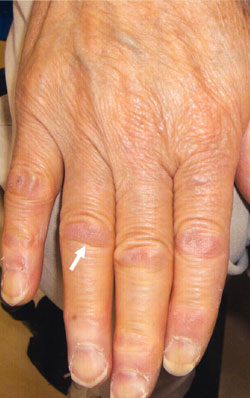
Amyloidosis is a relatively rare condition characterized by accumulation of amyloids, an abnormal form of protein in different organs impairing their normal functions. Amyloid proteins are produced in the bone marrow when the normal structure of the protein changes because of an abnormal folding of the proteins (known as beta pleated sheets).Symptoms of Amyloidosis depend upon the involvement of the organ and also vary from person to person. Commonly involved organs in Amyloidosis are heart, kidney, liver, spleen, nerves etc. Amyloidosis can also prove to be life threatening. Amyloidosis usually occurs after 50 years however some forms may occur earlier. There are various types of amyloidosis; some of them are acquired and some are inherited.There is no cure available for amyloidosis however treatments are available to keep symptoms in check.
Symptoms
In many people initially there is no symptom however as the disease progresses symptoms gradually become evident. Symptoms usually depend upon the organ involved. Common presenting symptoms include swelling of feet, ankles and legs, increased tiredness, difficulty in breathing, tingling sensation felt in the hands and the feet, pain in the wrist region, repeated attack of diarrhea, often with passage of blood (dysentery), sometimes constipation may also occur, early satiety, unexplained and unintentional weight loss, enlargement of the tongue, painful and difficult swallowing, changes in the skin like abnormal thickening of the skin, patches under the eyes or easy bruising, irregularity in the heartbeat etc.Like symptoms complications of amyloidosis depend upon the organ involved.Commonly affected organs are
1) Kidneys: kidneys are the filtering organs of the body. Amyloid deposits in the kidney may lead to impaired kidney functions leading to leakage of protein into the urine from blood, accumulation of waste products in the body and ultimately complete shut down of kidney function (kidney failure)
2) Heart: Amyloid deposits interfere with the ability of the heart to get filled with blood hence during the next contraction less amount of blood is pumped out of the heart to different organs. Common symptoms include shortness of breath, increased tiredness etc. Sometimes the conduction capacity of the heart also disturbed resulting into rhythm abnormalities.
3) Nerves: involvement of nerves may lead to number of symptoms like tingling, numbness, loss of feeling or burning sensation along the sole of the feet or in the toes. Depending upon the type of nerve involved there may be alteration of bowel habits (constipation or diarrhea), inability to maintain blood pressure at normal level resulting into sudden fall in blood pressure even black out.
Causes
The cause of amyloidosis depends upon the type of amyloidosis. The different types of amyloidosis are
1) Immunoglobulin light chain amyloidosis (AL): this is the most common form of amyloidosis affecting heart, skin, kidneys, liver etc. Earlier it was called the primary amyloidosis. In this form the bone marrow produces excess amount of abnormal amyloids which get deposited in the above mentioned organs and produces various symptoms.
2) AA amyloidosis: this form of amyloidosis is known as secondary amyloidosis affecting usually the kidneys, liver, digestive tract etc. This form usually occur in patients suffering from chronic infections or inflammatory diseases like rheumatoid arthritis, inflammatory bowel diseases like Cohn’s disease or ulcerative colitis
3) Hereditary amyloidosis: this form of amyloidosis runs in families mainly affects the heart, kidneys, nerves etc. This is one of the leading causes of heart failure in African American men as it is more common in these people in comparison to Caucasians.
4) Dialysis related amyloidosis: this form of amyloidosis occurs in patients having long term dialysis. Usually the joints are involved especially the wrist joint leading to carpal tunnel syndrome.
Risk factors
Although any people can suffer from amyloidosis; common risk factors associated with this include
1) Age: anyone above 50 years of age are at increased risk
2) Sex: men are usually affected more commonly
3) Co-existent diseases: chronic infections and inflammatory diseases increases the risk
4) Family history of amyloidosis
5) Chronic dialysis also increases the risk of Amyloid deposition in various organs.
Treatment
Treatment options depend upon the type and severity of the disease. The main aim of treatment is to relieve symptoms as it is not possible to cure the disease completely.
1) For AL form of amyloidosis available treatment options include chemotherapy and peripheral blood stem cell transplant (more important in patient whose heart is not very much affected).
2) For AA amyloidosis underlying inflammatory or infection is to be treated.
3) For hereditary amyloidosis often liver transplant is recommended
4) For dialysis related amyloidosis kidney transplant is a feasible option.
Some commonly available drugs are prescribed to relieve the symptoms; these are pain killers, diuretics, blood thinning agents or anticoagulants, heart rate controlling drugs etc.





